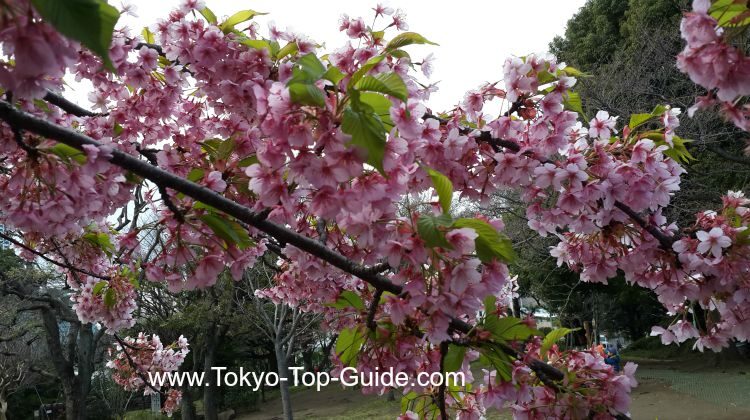Going to Tokyo? 10 things that should be in your suitcase.
There are a few unique things that should be on your mind, that set the city apart from other travel destinations in terms of what to pack.
Tokyo Packing List Tips

Prepare Your Tokyo Packing Checklist With These Things In Mind
- Think Small
Luggage storage space in trains, including the Skyliner train from Narita Airport to Tokyo city, are on the small side. Compared to westerners, Japanese people travel with smaller luggage. They are masters of packing everything into a tiny suitcase. They have no other choice, and so do you. Coin lockers in subway stations aren’t big enough to hold big suitcases either. Book now: From Narita Airport to your Tokyo Hotel by Skyliner trainOr: From Narita Airport to your Tokyo Hotel by Limousine Bus
See Also: How to buy Tokyo Subway Ticket in advance - Lots of Stairs Tokyo Subway stations have endless pathways, some include stairs (and no elevators). Planning to use the underground with lots of suitcases in hand is not a good idea.
- The electricity in Japan is 100 volts. If you need to bring along your own appliances make sure you pack an electric converter.
American appliances can be used in Japan without an electric converter although they will have less power. If your appliances are three-pronged, you need a plug since Japanese appliances are two-pronged. - Wi-Fi in Japan It’s easier than ever before to have a Wi-Fi connection in Japan. Nowadays there’s an option to collect the Wi-Fi device in all international Japanese airports. The service supports up to five different devices of your choice simultaneously – cellphones, tablets, and laptops. True that free Wi-Fi is also better than it used to be, but WiFi in Japan is still not as spread as in the US. So for the ability to plan on the go and stay connected socially, I would recommend **not** to rely on the free WiFi system. Click here to order 4G WiFi coverage across Japan
- Money. Many stores and restaurants do not accept credit cards. Bring Japanese Yen in a substantial amount in cash.
- Shoes and socks. Since it’s a Japanese custom to take off your shoes when you’re indoors, you might find yourself taking off your shoes very often. So, please no holes in socks or pantyhose. Throw in a pair of comfortable shoes that you can slip on and off easily. Make sure to bring comfortable walking shoes too. You’ll be doing a lot of that in Tokyo.
- A small towel. A mini-towel in your bag for drying your hands is very useful. In most restrooms, in spite of their extreme cleanliness, there are no paper towels. Carrying a mini towel with you is a very common Japanese thing to do.
Tokyo Packing List
- Visa For Japan
- Check the expiration date of your passport (for Japan – it must be at least 6 months before expiration)
- Buy Japanese Yen in cash (there are very few ATM spots in Tokyo)
- Hotel vouchers – Print out the Name and address of your Tokyo hotel in Japanese and in English. It will come in handy for taxi drivers and for filling in your hotel address on your immigration landing card.
- Flight timetables
- Photocopies of your passport and other documents
- Travel Insurance
- Walking shoes
- Great socks
- Your Prescription Medicine
- A few Mini-towels
- Electric converter
Tokyo Packing List: Dressing Code In Tokyo

Casual clothes are fine for sightseeing, but the Japanese dress very formally: a suit or a jacket for men, a skirt, and high heels for women. If you want to feel like part of the crowd Jeans and shorts are not an option when dining in Tokyo restaurants.
Women dress very femininely – usually in skirts and heels, but nothing too Revealing here. No short skirts, no low cleavage. Japanese women dress very conservatively and you’re likely to feel very out of place in shorts or a cleavage.
Colors. Men and women dress in classic colors: black, blue, brown, and gray. If you plan to have a business meeting in Tokyo, know that Shirts for men are usually blue or white. If you’d like to blend in the crowd, the classic colors are a safe option.
Avoid black ties or an all-black look for women as this is formal funeral clothing.
See More: The Culture Of Japan: 10 Common Mistakes Westerners Do About Japan Culture
What to Pack For Tokyo By Season
What to Pack For Tokyo winter? What to Bring In the wet season?
Tokyo winter (December-February). Packing warm clothing is a must in winter. Temperatures are around 5 – 10 degrees Celsius (40 – 50 degrees Fahrenheit). The wind is freezing cold. Your packing lists should include Gloves, long underwear, a scarf, and a warm knitted hat.
Winter weather in Tokyo is very dry, and people with sensitive skin should take along their favorite skin lotion in abundance.
Wet season (June). Japan’s Summer climate begins in June with the rainy season, which lasts between 3 weeks to 1 month.
Although it doesn’t rain every day, rain can be heavy. Pack an umbrella.
Summer in Tokyo (July-August). For the hot and humid summer, cotton clothing is the best. Most Tokyo places are air-conditioned, so women might need a light jacket or cotton sweater too.
Tokyo Autumn (October-November). The climate is perfect for sightseeing. Tokyo Weather in October means pleasant temperatures during the day and a clear sky.
Tokyo Night temperatures drop significantly, so bring something warm for the evening.
Spring (March-May) is the perfect season to visit Tokyo. That’s when Japan’s famous Blossom festival happens, beginning with plum trees in February through to March and April with cherry blossom flower festival.
See More: Tokyo Weather: How Japan Weather Affects YOUR Vacation
See Also: Best Time to Visit Tokyo
Luggage
Compared with Westerners, who often pack large suitcases, Japanese people tend to travel with smaller size luggage around the country. As a result, there usually isn’t a wide space to store large luggage in trains (including the shinkansen – the bullet train). Coin lockers in subway stations aren’t large enough to hold big suitcases either. Subway stations in Tokyo consist of endless pathways, some include stairs (and no elevators). Planning to use the subway with luggage in hand is not a good idea. For better suggestions on how to arrive to your hotel, see the page on traveling from Narita Airport.
Money
Many stores and restaurants might not accept credit cards. It’s a good idea to prepare for that by preparing a substantial amount of Japanese yen in cash. Be careful of pickpockets if you are taking a crowded train, or going to an event where you can expect a large crowd.
Shoes & socks
Since it’s a Japanese custom to take off your shoes indoors, you might have to take off your shoes very often. Pack a pair of shoes that you can slip off and on easily. Make sure to put on your checklist comfortable shoes for walking, you’ll be doing a lot of that. Be sure to pack your best-looking socks and pantyhose to avoid any embarrassment when you take off your shoes.
A small towel
One of the best travel tips I got before visiting Tokyo for the first time, was from a friend of mine who lived there for a few years with her family. She told me to carry a mini-towel in my bag so I could dry my hands. I must say it sounded strange, and it took me a few days to understand why and follow that advice. Most restrooms, in spite of their extreme cleanliness, do not provide paper towels. Carrying a mini towel is a very common Japanese thing to do.
Clothing
Casual clothes are fine for sightseeing, but most Tokyo citizens dress very formally – a suit or a jacket for men, Long shorts are okay for men as long as the beach look is avoided. If you want to feel like part of the crowd – Jeans are not an option while dining. Women usually wear Skirts and high heels. Revealing clothes are not common among Japanese women. Women are likely to feel very out of place in shorts or cleavage. Men and women tend to dress in classic colors – black, blue, brown, and grey. Shirts for men are usually blue or white. Other colors are worn, but if you want to blend in the crowd, the classic colors are a safe option. Men should avoid black ties and women should avoid an all-black look – since this is the funeral attire.
Some tips for seasonal clothing
Packing warm clothing is a must in winter. The wind is freezing cold. Your list should include Gloves, long underwear, a scarf, and a warm knitted hat. Winter is very dry, and people with sensitive skin should pack their favorite skin lotion in abundance. Wet season – pack an umbrella. In the summer – cotton clothing is the best. Most places are air-conditioned, so put a light jacket on your checklist. Autumn and spring tips – packing light jackets and sweaters is recommended. Evening clothing must be warmer since the temperatures drop drastically.
Appliances
The electricity in Tokyo is 100 volts. If you need to bring any appliances from your own country, make sure to pack a converter or plug. American appliances can be used in Japan without a converter although they will have less power. If your appliances are three-pronged, you need a plug since Japanese appliances are two-pronged. If you forget to put a converter on your packing checklist – you can purchase converters and plugs in the airport shops.
Mosquito repellent
If you’re visiting during the summer season you’re likely to find mosquitoes in parks and gardens. You can find mosquito repellents in Japanese drugstores.





